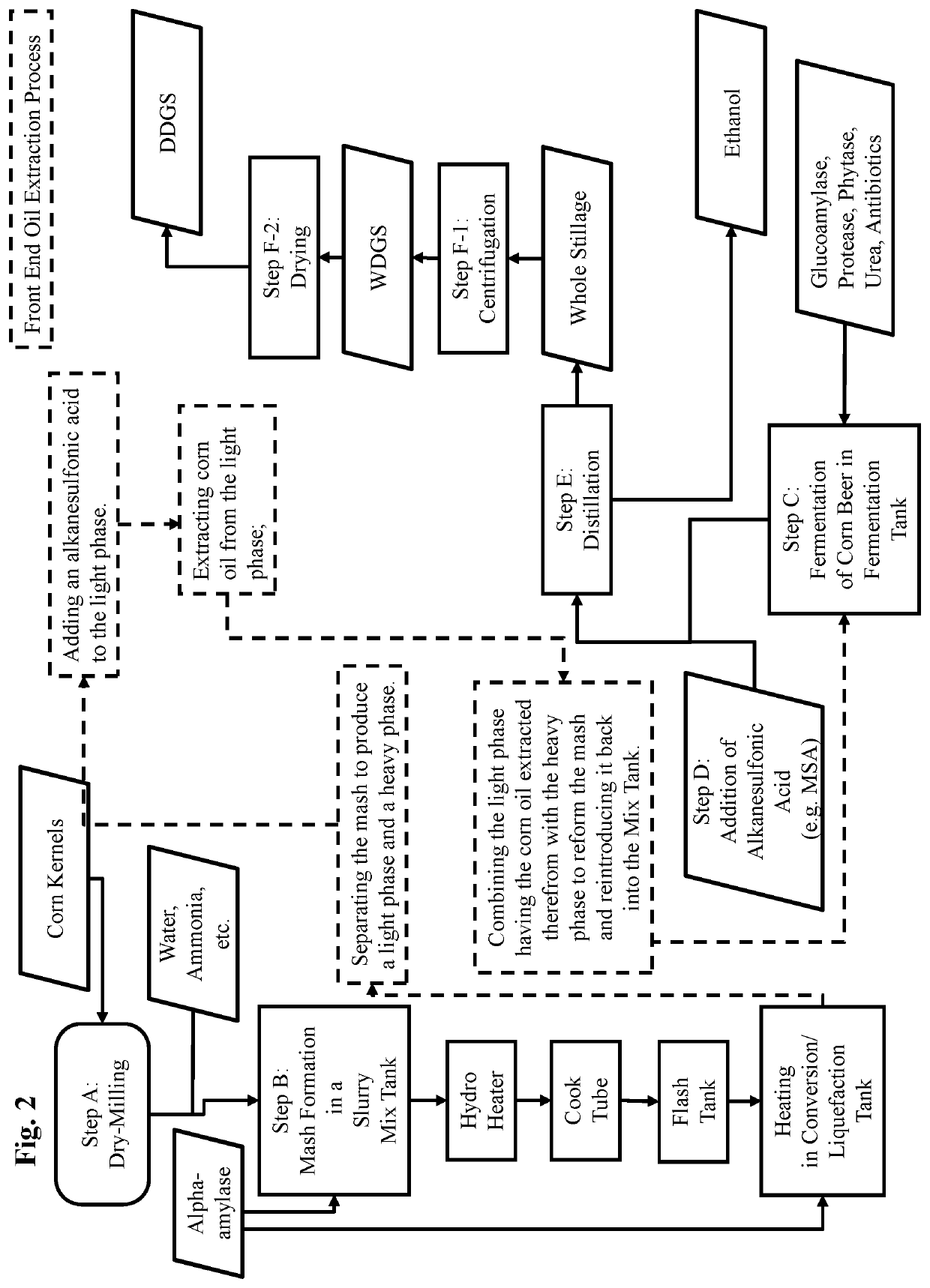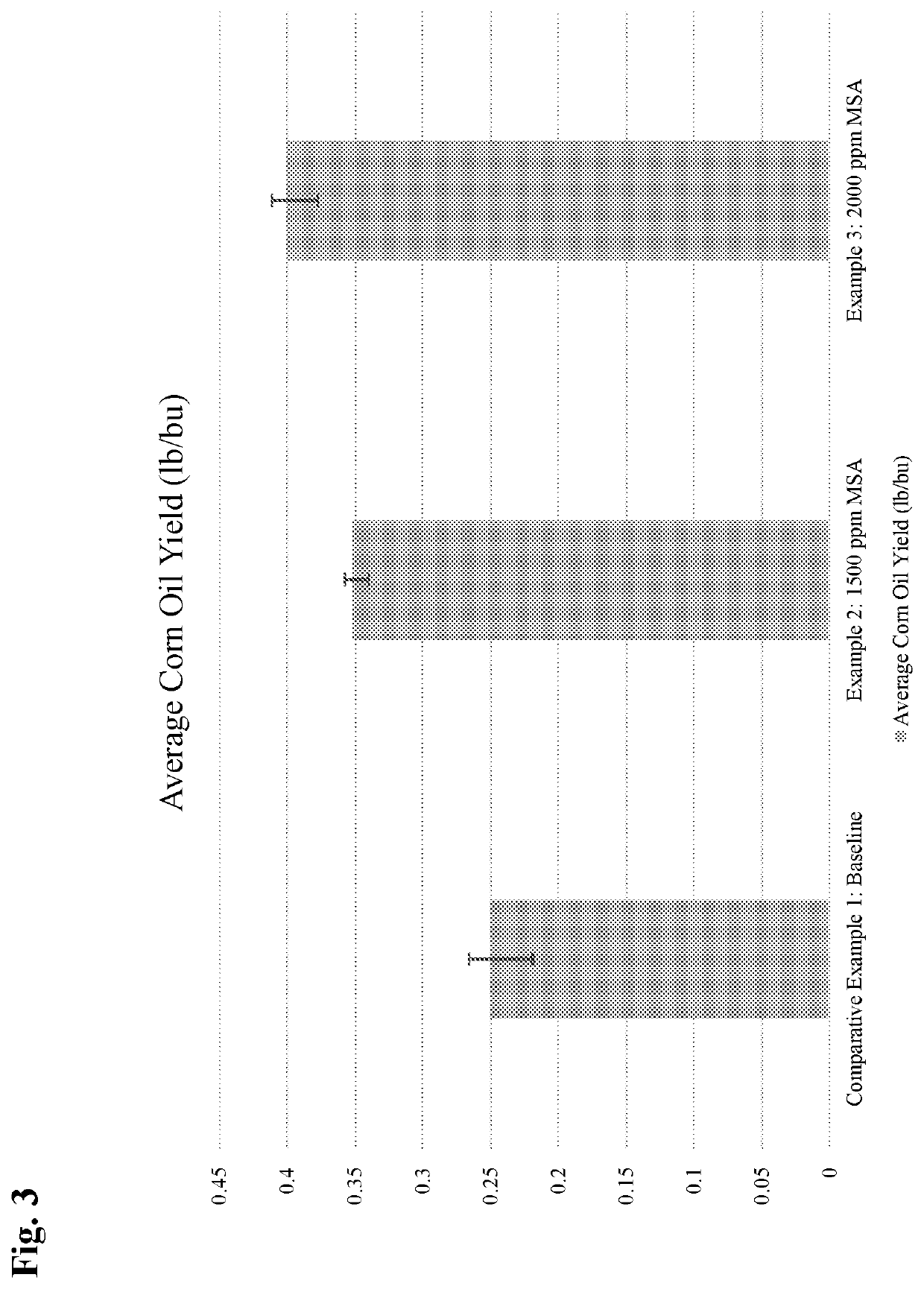Dry-milling ethanol process
a technology of ethanol and ethanol, which is applied in the field of dry milling ethanol process, can solve the problems of sulfuric acid not readily biodegradable, environmental concerns, and strength and corrosion of sulfuric acid, and achieve the effect of safe and effective production of ethanol and readily biodegradabl
- Summary
- Abstract
- Description
- Claims
- Application Information
AI Technical Summary
Benefits of technology
Problems solved by technology
Method used
Image
Examples
examples
Comparison of the Use of MSA and Sulfuric Acid During Distillation
[0120]A beer is produced via the steps of (A) grinding corn kernels to form a corn flour, (B) combining the corn flour with water and an enzyme to form a slurry, (C) heating the slurry to reduce the viscosity, and (D) fermenting the slurry thereby producing beer and carbon dioxide. Steps (A) through (D) are in accordance with the subject disclosure.
[0121]In accordance with the subject disclosure, in a Process Example a sample of the beer is distilled subsequent to pH adjustment to 3.5 with MSA (70% by weight MSA in water, e.g., LUTROPUR® MSA). For comparative purposes, in a Comparative Process Example a second sample of the beer is distilled subsequent to pH adjustment to 3.5 with sulfuric acid (96% by weight sulfuric acid in water). In both examples, 250 grams of the beer is acidified with the respective acid to about pH 3.5, i.e. the acid is added to 500 mL in a round bottom flask in an amount sufficient to achieve ...
PUM
| Property | Measurement | Unit |
|---|---|---|
| temperature | aaaaa | aaaaa |
| pressure | aaaaa | aaaaa |
| temperature | aaaaa | aaaaa |
Abstract
Description
Claims
Application Information
 Login to View More
Login to View More - R&D
- Intellectual Property
- Life Sciences
- Materials
- Tech Scout
- Unparalleled Data Quality
- Higher Quality Content
- 60% Fewer Hallucinations
Browse by: Latest US Patents, China's latest patents, Technical Efficacy Thesaurus, Application Domain, Technology Topic, Popular Technical Reports.
© 2025 PatSnap. All rights reserved.Legal|Privacy policy|Modern Slavery Act Transparency Statement|Sitemap|About US| Contact US: help@patsnap.com



